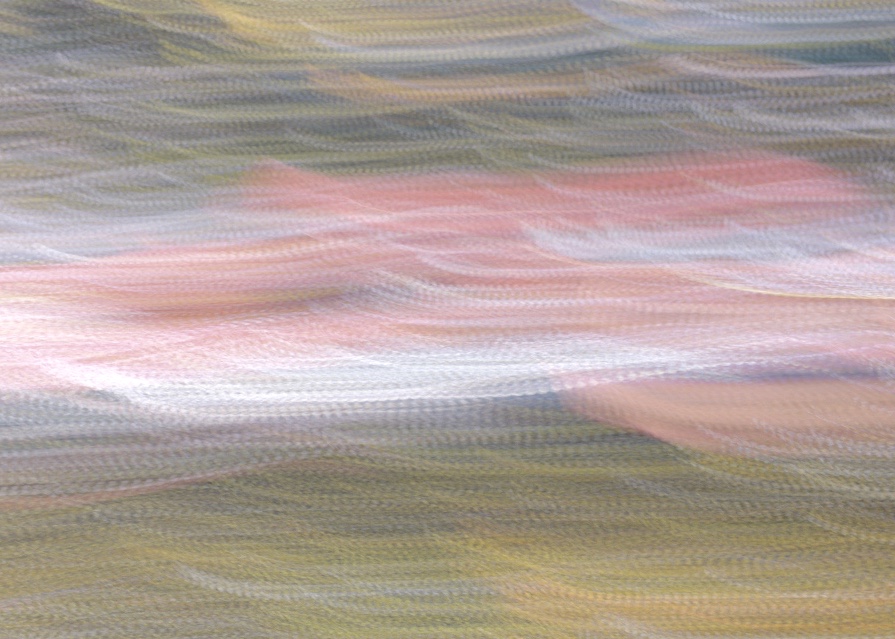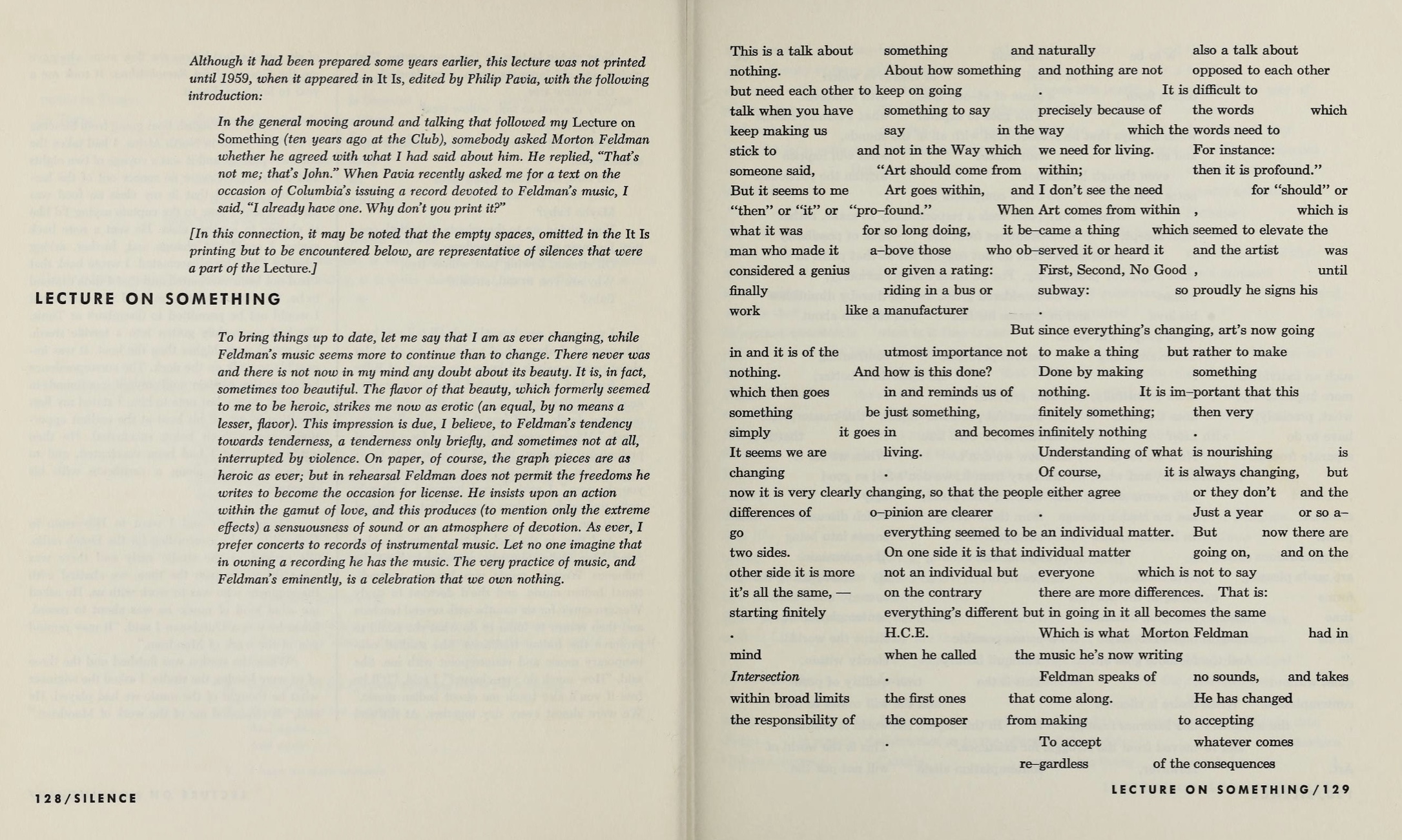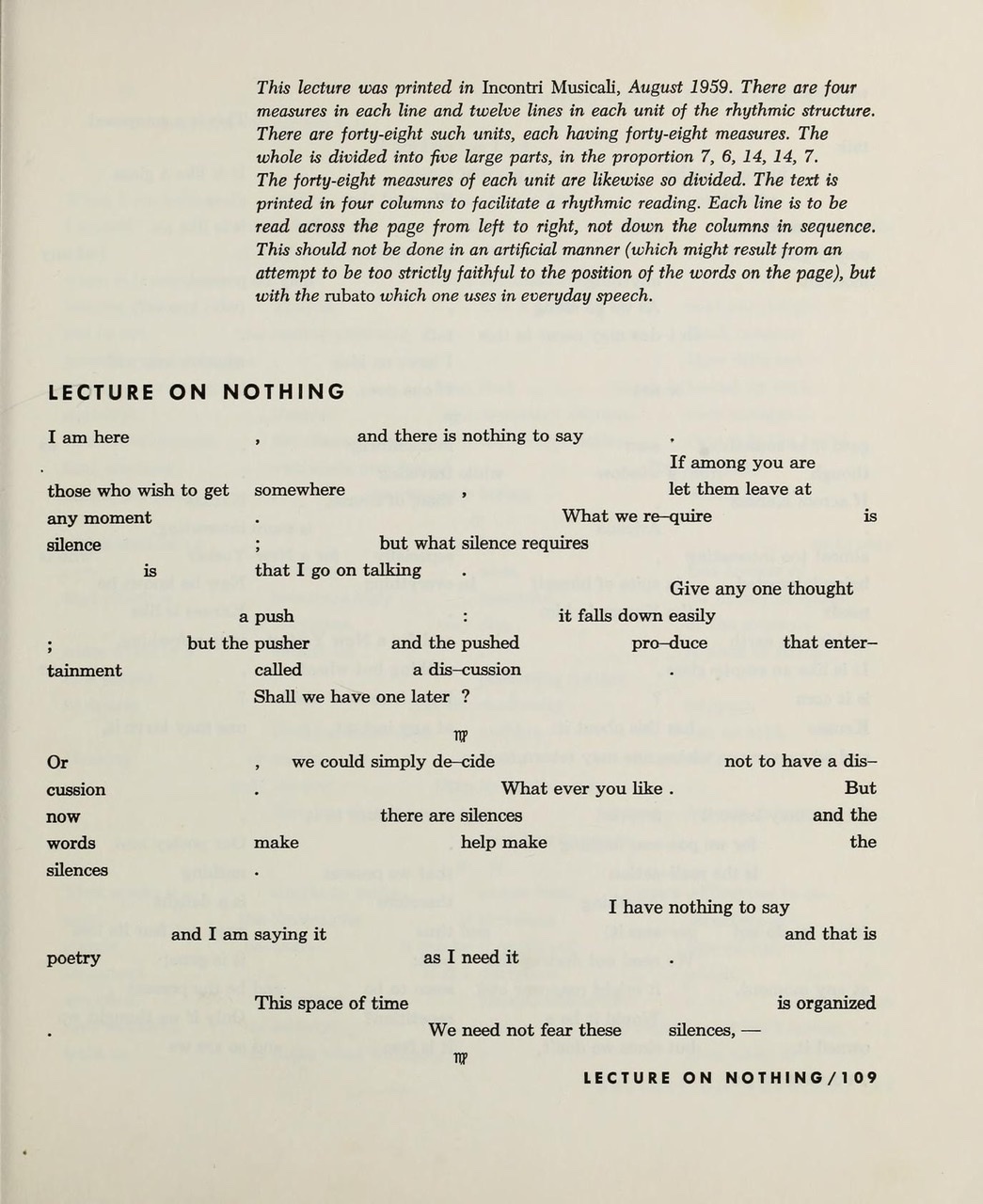
“The intangible represents the real power of the universe. It is the seed of the tangible. It is living void because all forms come out of it, and whosoever realizes the void is filled with life and power and the love of all beings.“ ~ Bruce Lee via Brain Pickings
intangible – something that cannot be touched or grasped; it doesn’t have physical presence. Examples might be ideas, emotions, love, shared experience, space.
How does something intangible hold the real power of the universe? Bruce Lee describes it as the seed of the tangible, similar to how John Cage describes nothing and something in his lectures. And, if Bruce Lee is right, what we consider nothing has a lot of power. At first, there was this blank page. You might say it contained nothing. Then I began to write, creating something out of nothing. What nonsense is this? And, why write about something and nothing? Well, when it comes to perceptual awareness, there is always something and nothing, yet we tend to focus our attention on the somethings. In the art world, this is called figure and ground or form and space. An artist needs to be keenly aware of both.
The artist/musician John Cage wrote two provocative pieces for his book, Silence – Lecture on Nothing and Lecture on Something. His most well known musical piece is called 4’33. It’s a composition where a musician sits at a piano for four minutes and 33 seconds without playing anything on the piano. Instead, the piece composes itself anew every time through the ambient sounds in the room. It’s said that this piece came about after Cage met the artist Robert Rauschenberg, known for his White Painting, among many others. These are canvases of white, which change constantly depending on the light and shadow in the room.
Read: When John Cage met Robert Rauschenburg and How to Look at a Rauschenberg Painting.
Lecture on Nothing
According to the MOMA site, when the White Paintings were shown at the Stable Gallery in 1953, John Cage wrote a statement that said, in part, “To whom: no subject, no image, no taste, no object, no beauty, no message, no talent, no technique, no why, no idea, no intention, no art, no object, no feeling, no black, no white, no and.” In other words, nothing.
The image, below right, is from the first page of the lecture on nothing (Source: Internet Archive). Note the structure of this piece as described at the beginning. Cage talks about structure in the piece and why it’s important. My favourite quote is the line, “I have nothing to say and I am saying it.” We are creating the composition of our lives in everything we say, don’t say, do or don’t do. Here are a few other favourite excerpts from the lecture on nothing.
- Nothing is like an empty glass into which at any moment anything may be poured. (glass is the structure).
- Our poetry now is the realization that we possess nothing. Anything, therefore, can be a delight (since we don’t possess it).
- Structure without life is dead. But life without structure is unseen. Pure life expresses itself within and through structure. A structure is like a bridge from nowhere to nowhere, and anyone may go on it.
- Each moment is absolute, alive and insignificant. And, if one stops thinking about them, they become fresh and new.
- If one is making something which is to be nothing, the one making must love and be patient with the material he chooses. Otherwise he calls attention to the material, which is precisely nothing, whereas it was nothing that was being made; or he calls attention to himself, whereas nothing is anonymous.
- The technique of handling materials is, on the sense level what structure as a discipline is on the rational level: a means of experiencing nothing.
- Should one use the materials characteristic of one‘s time? Now there’s a question that ought to get us somewhere.
- We make our lives by what we love.
- Everyone has a song which is no song at all; it is a process of singing, and when you sing, you are where you are.
Cage is saying that somethings are always created out of nothing, the intangible, living void. They’re not a form of self-expression; instead they are a inner response. One starts with a structure that is empty and all possibilities are on the table. Wu-wei or effortless action, says that nothing should be forced. Cage repeats this mantra many times throughout the lecture.
”More and more, I have the feeling we are getting nowhere. Slowly, as the talk goes on, we are getting nowhere and it is a pleasure. It is not irritating to be where one is. It is only irritating to think one would would like to be somewhere else.”
Cage is asking us to wake up to this very moment. Don’t judge it or try to make meaning of it. Just see it for what it is and then act accordingly.
Lecture on Something
Cage begins this piece by saying that something and nothing are not opposed to each other. Rather they need each other to keep going. Every something is an echo of nothing. He also says that saying/doing something and saying/doing nothing are essentially the same thing. With respect to making art, the general consensus is that the artist goes within and creates something profound, thus elevating the artist above those who view the art. Cage proposes a subtle difference in that the art itself goes within.

“It is of the utmost importance not to make a thing but rather to make nothing. And how is this done? By making something which then goes in and reminds us of nothing. No silence exists that is not pregnant with sound. Every something is an echo of nothing.” (Cage, 234)
Art then is not about the artist but in how the art is seen by the viewer. An artist must be open enough to receive whatever comes for him to make. This means one entertains all possibilities and doesn’t try to force the outcome.Here are some more excerpts from the lecture on something.
- Through contemplation of the forms existing in human society it becomes possible to shape the world. (I Ching)
- The highest responsibility of the artist is to hide beauty. (Blythe)
- The important question is what is it that is not just beautiful but also ugly, not just good, but also evil, not just true, but also an illusion.
- When nothing is securely possessed one is free to accept any of the somethings.
- The important questions are answered by not liking only but disliking and excepting equally what one likes and dislikes.
- Anything may happen and it all does go together. There is no rest of life. Life is one.
- Clinging or trying to force life into one’s own idea of it, of what it should be, is only absurd.
- It is nothing that goes on and on without beginning, middle or meaning or ending. Something is always starting and stopping, rising and falling.
- No silence exists that is not pregnant with sound.
- No thing in life requires a symbol since it is clearly what it is: a visible manifestation of an invisible nothing. Each something is a celebration of the nothing that supports it.
- Responsibility is to oneself; and the highest form of it is irresponsibility to oneself which is to say the con acceptance of whatever responsibility to others and things comes along.
- When we are proud, that pride keeps us from observing very clearly.
It is through the inspired thoughts of Cage that I’ve experimented with noticing my own likes and dislikes, and seeing how they hold me back. The point is not to like what you dislike, or to dislike what you like. It is to let things be as they are. Life is continually throwing things at us, some of which we’ll like, and some we won’t. All that matters is what we do with it. I hope these excerpts are intriguing enough that you’ll read the entire lectures and learn more about Cage. The book about him, Where the Heart Beats, by Kay Larson is one of my favourites.
And finally, what does this all have to do with seeing and perception? The perceptual space is the nothing upon which all something’s emerge. It is the experience of being before thinking. However, that makes it seem like a linear process. Yes, perception comes before thought but it is always there. It’s the foundation or backdrop of all experience. Becoming aware of this perceptual space, of “no-thing,” brings depth and richness to your experience of life.
